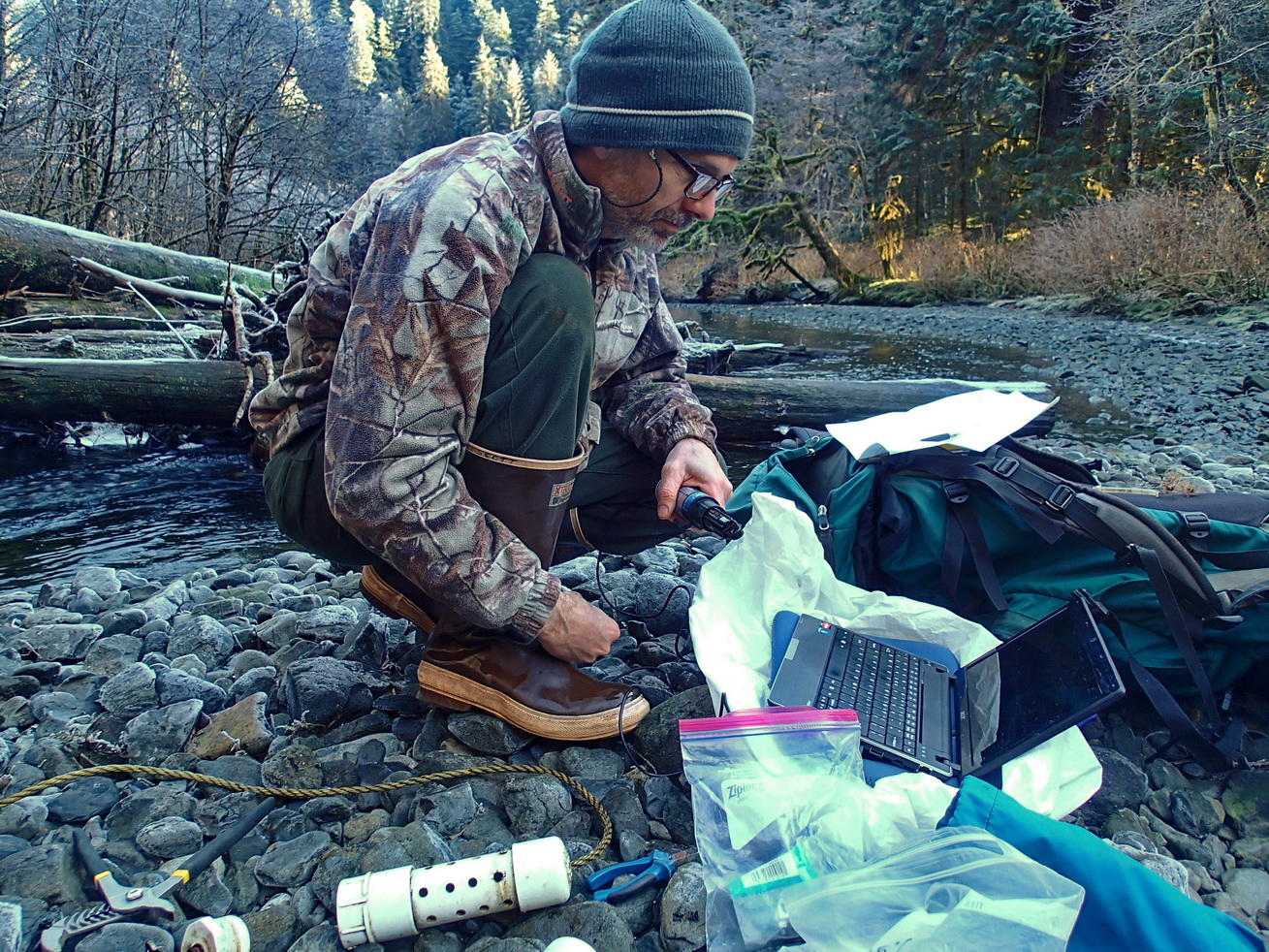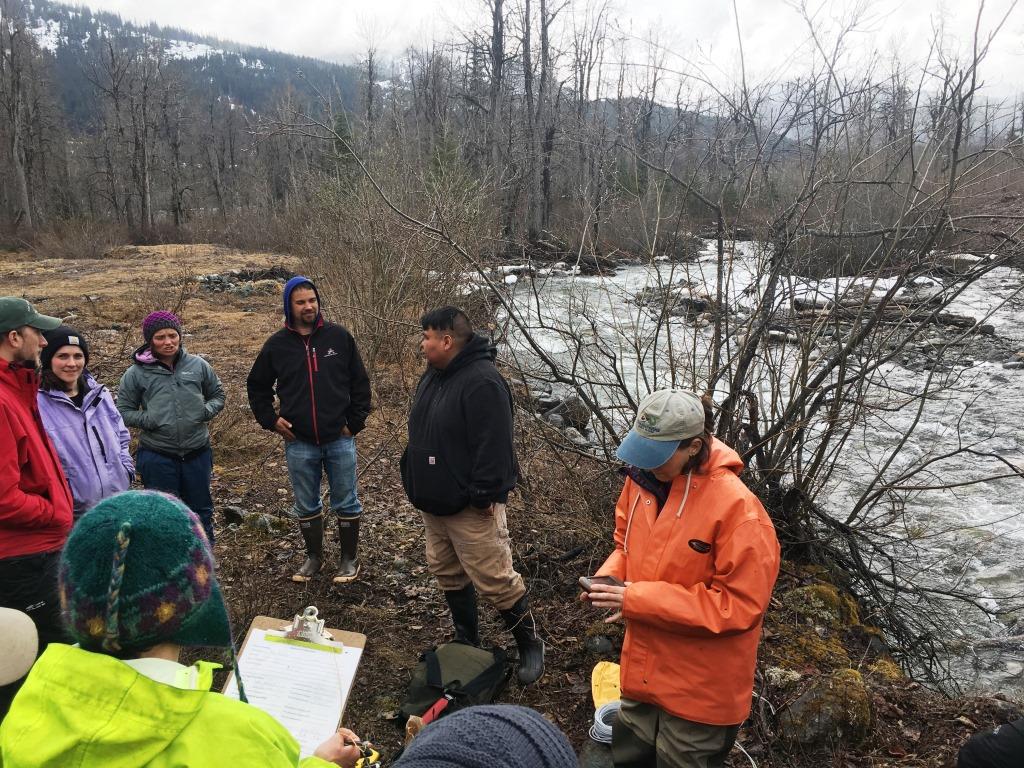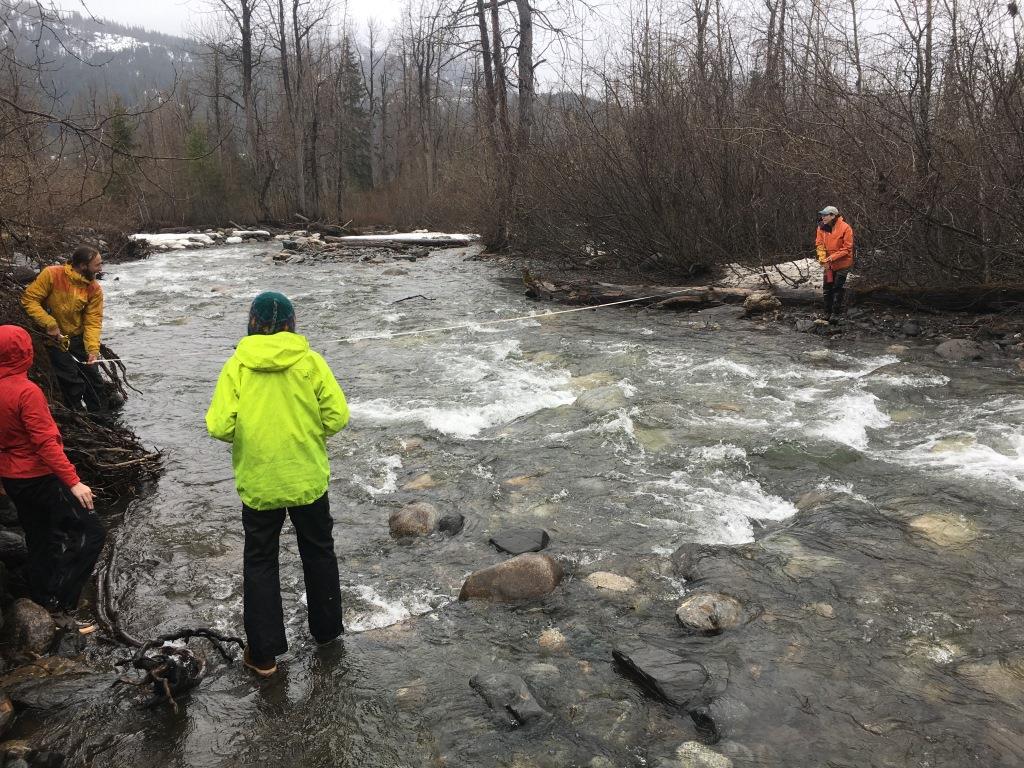Southeast Alaska’s streams and rivers are important breeding and rearing grounds for salmon harvested by subsistence, sport, and commercial fishermen. Recent closures of major rivers and streams to fishing due to reduced salmon populations have fisheries managers and users alike looking for ways to monitor and understand environmental factors that could be contributing to declining salmon runs in Southeast.
In an effort to better understand and respond to the effects of climate change on stream and river systems, some Southeast Alaska communities and management agencies have begun monitoring temperatures of their local aquatic systems. Water temperature is one of the most significant factors in the health of stream ecosystems, where it affects the growth and survival of algae, aquatic plants, invertebrates, and fish. Salmon have evolved in natural river and stream systems, where water temperatures fluctuate daily, weekly, seasonally, and along the route of the stream. Changes in climate can alter this natural variability, posing risks to habitat suitability for salmon.

SAWC has teamed up with local tribal, agency, and university partners to create a network of communities to monitoring stream temperature in Southeast Alaska. The goal of this network is to coordinate existing temperature monitoring efforts, set a standard protocol for data collection, train additional communities interested in monitoring, and make the data accessible to communities, tribes, and practitioners who utilize and manage these resources.
Earlier this month, SAWC and the Chilkat Indian Village partnered to hold a climate change adaptation and monitoring training in Klukwan. Twenty-two participants representing 5 tribal organizations, 5 NGOs, the Alaska Dept. of Fish & Game, and private consultants came together to learn methods and protocols for monitoring the effects of climate change on aquatic resources.


Participants learned about site selection considerations and data collection protocols for monitoring stream temperature, methods and protocols for monitoring climate-related changes and impacts to wetlands, resources for contributing to statewide aquatic temperature databases, and frameworks that are available for developing community climate adaptation plans. The group discussed shared goals for the temperature monitoring network and outlined next steps to ensure individual data collection efforts contribute to a regional dataset that can inform adaptation plans and management decisions.
The Southeast Alaska Stream Temperature Monitoring Network is continuing to develop as newly equipped tribes and community organizations create monitoring plans and begin collecting data. SAWC Science Director Rebecca Bellmore coordinates the development of this network, which has recently adopted a standard protocol for the collection of stream temperature data – available for download here. Additionally, the network is currently formalizing its goals and expectations from regional cooperators.
If you are interested in learning more about the network or establishing a stream temperature monitoring site near your community, or currently collect temperature data, please contact Rebecca Bellmore: rebecca@sawcak.org or (907) 302-3842
This project is supported by the North Pacific Landscape Conservation Cooperative. The Klukwan training was made possible by the Chilkat Indian Village
